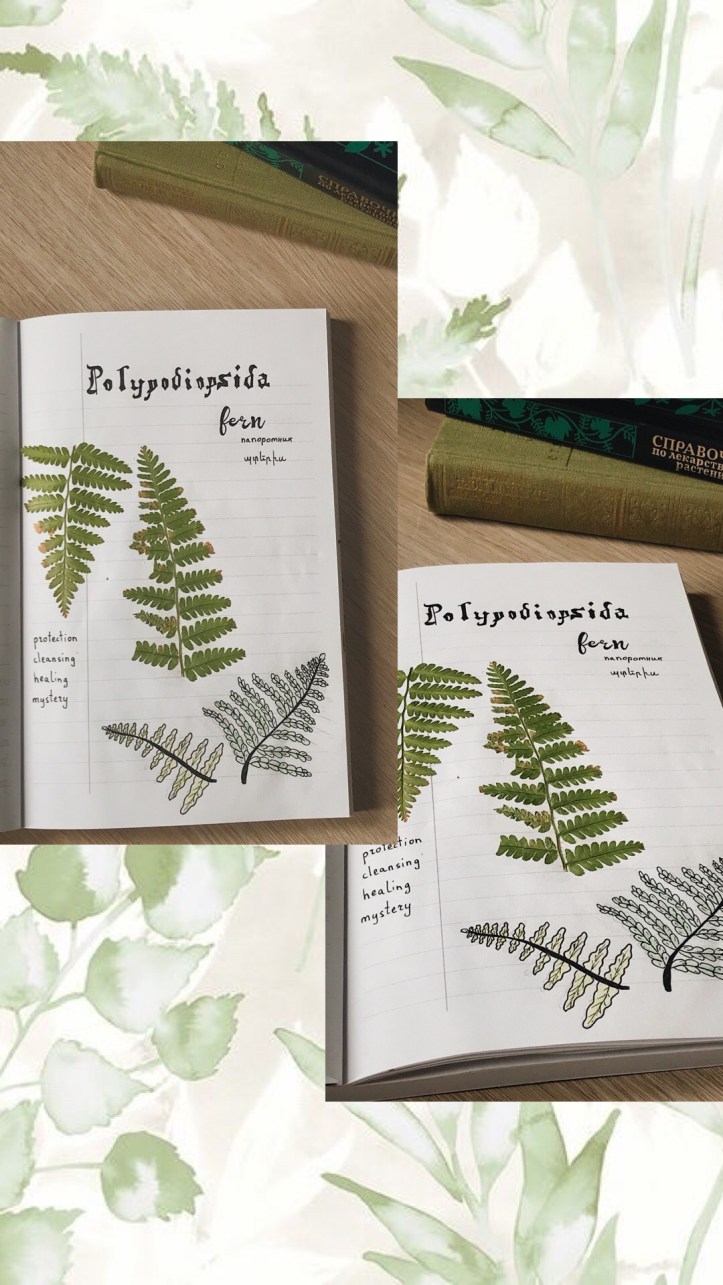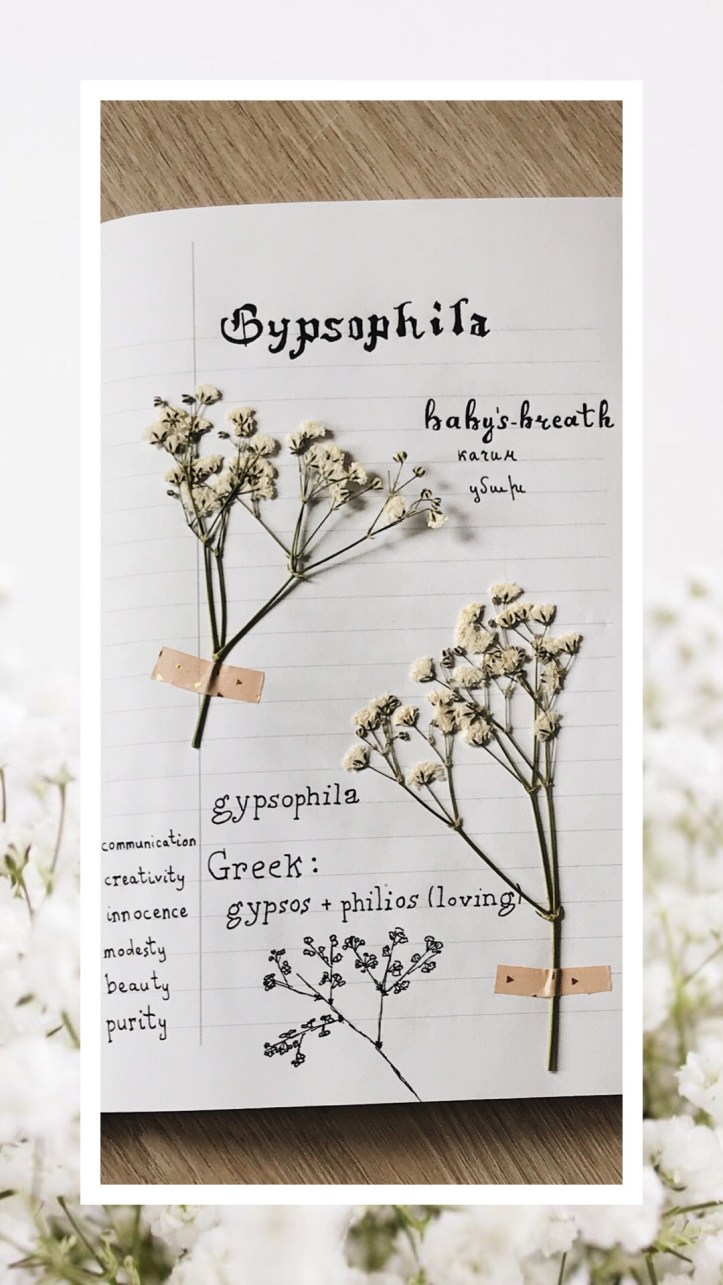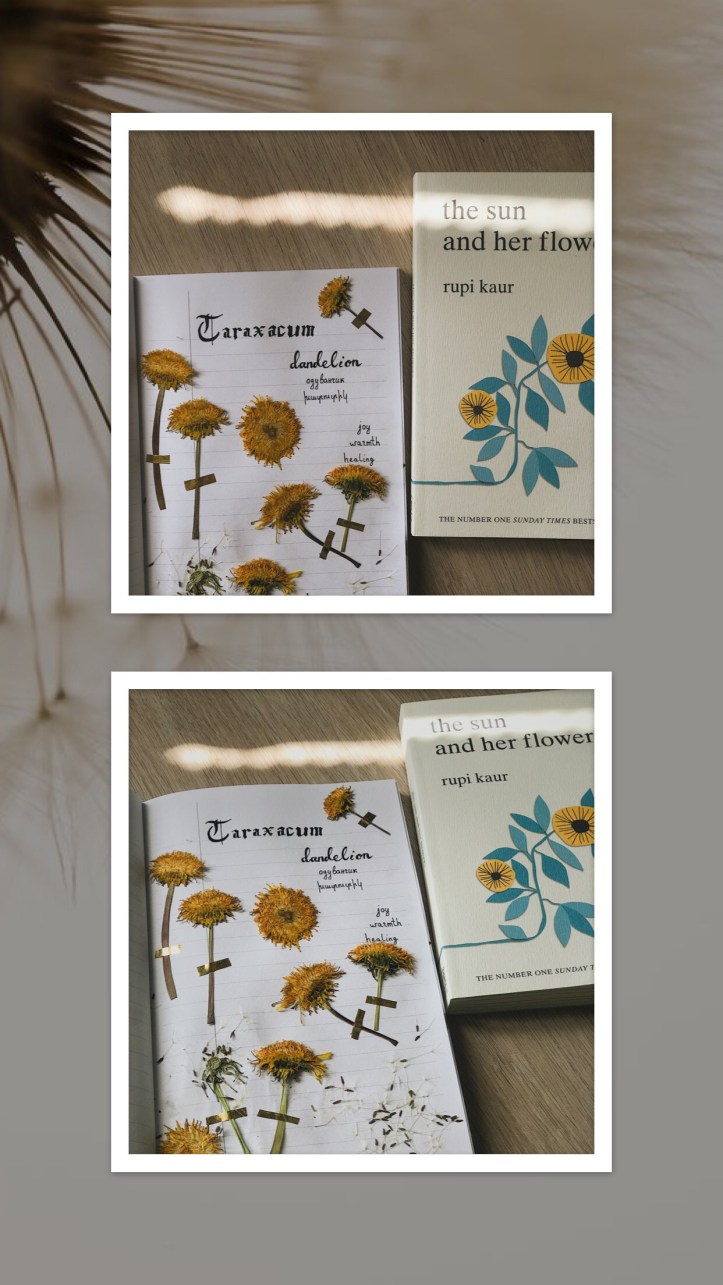herbarium (n.)
a systematically arranged collection of dried plants and flowers.
I guess there no need for any further explanation of what a herbarium is. Recently I started my own, and decided to share the pages I’ve done so far, and a few ideas maybe to inspire someone to start their own.
There are a few types of herbarium: pressing the flowers/plants in a notebook, drying the flowers and keeping them in a box, hanging them from the wall, or making different kinds of decor with them. I chose the first one, as having multiple journals and notebooks with various things is one of my hobbies, so I’m going to talk about the notebook herbariums.
First things first, you need to find the plants or flowers of your choice. Then for drying and pressing them, you just need to place them in between a notebook or a book (warning-flowers leave spots, so if you’re placing them in a book, make sure to put them in paper napkins first, so that the book pages wouldn’t get stained). Place the notebook or book under sth heavy, like a pile of books or whatever, leave it like that for a few days and voila! you’re ready to go.
Be careful, as dried flowers get damaged very easily. You can either glue them to the notebook or use washi-tapes in different colors and patterns matching with your flowers. You can also sew the flowers to the page, but that may take a longer time. The flowers are attached, what’s next? Now is all up to your imagination, fill the pages with anything you want. Here are some ideas of how to make the pages look not as plain and boring.
1. Calligraphy. There are plenty of beautiful letter fonts. Some of them are hard to learn, but most of them are very easy to copy. Once you use one kind of font a few types, you learn it very quickly. So instead of boring letters, use different and classy ones, like gothic, typewriter etc.
2. Drawings. You can add simple drawing, even doodles to your pages. Drawings of the flowers you’ve attached, or just some greenery, leaves, branches, or anything you find matching with the page.
3. Names. Most flowers and plants have other names except for the commonly used ones. Lots of them have originated from Latin, Hebrew or other old languages. Try to find not only their original names, but their meanings and definitions as well. If you’re bilingual, know other languages, you can find the names in those languages as well. And even if you don’t, that’s a great way of learning sth new in an unknown language.
4. Characteristics and symbolism. Last but not least, you can write down and hence learn more about the flowers. For example what healing characteristics they have, how they’re used in medicine or even culinary, what kind of symbolism they have, where and when they originated etc. Basically anything that interests you.
The rest is all up to you. You can dedicate a whole page to one flower, or mix them, have a special theme, place them alphabetically etc. You can even write small verses, poems, quotes that inspire you somehow. There’s nothing better than being creative with nature. Enjoy the pages of my herbarium.









I have made herbarium in my student years and enjoyed it. Thanks for an excellent idea to use plants and flowers for making greeting cards. Will definitely do it with grandkids.
LikeLike
it’s such a great hobby, isn’t it? thank you ☺️
LikeLike
Nice working on notebook and also collection of plants and flowers. It’s good idea
LikeLike
thanks a lot 😄
LikeLike
Great idea!
LikeLike
thank you 😊
LikeLike